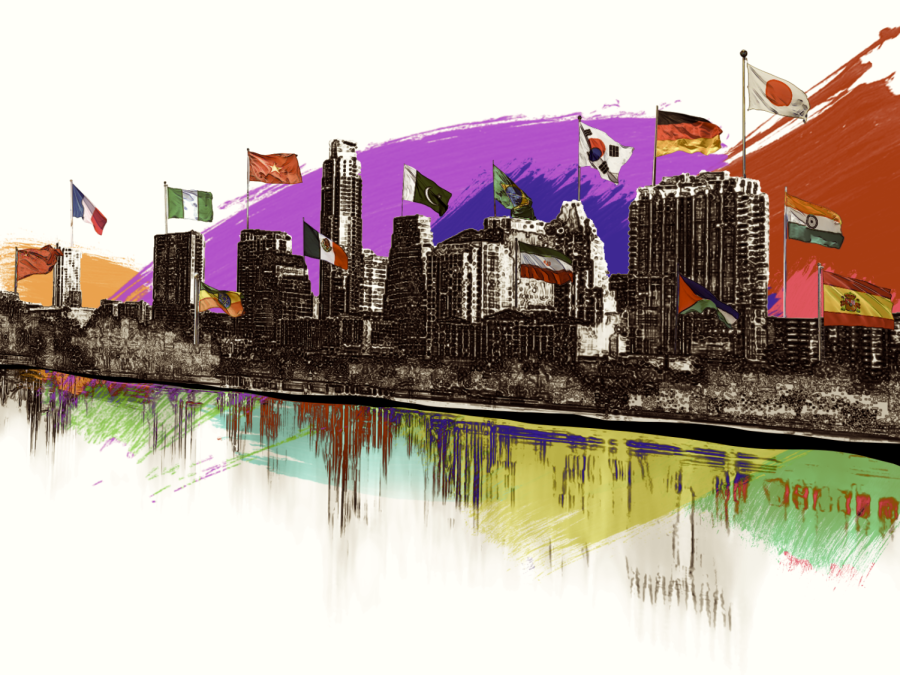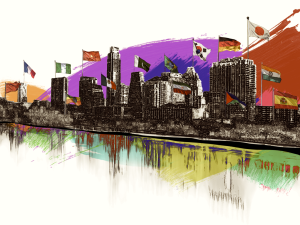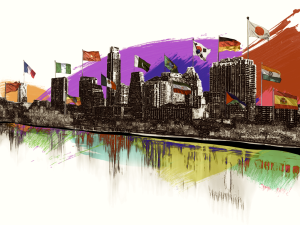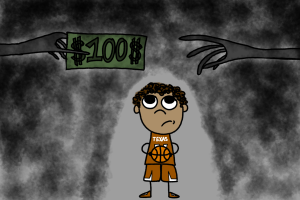Beyond statics and binaries: thinking of culture as repertoire
February 17, 2023
Editor’s note: This column was submitted by a member of the UT community.
A friend recently asked me to review his application to graduate school. In his personal statement, he wrote, “I learned to balance my Eastern and Western cultures.” My friend, a queer Indian American, was imagining his South Asian ancestry as frozen in time, centered on family values and collectivism, while conversely considering U.S. culture as modern and progressive. East versus West, traditional versus progressive. Thinking of culture in this way – unchanging and oppositional – not only limits our self-concept, but has also been historically deployed by different groups to justify slavery, colonialism and imperialism.
Culture is not static. In reality, people throughout time have had individual agency to assemble their idiosyncratic set of cultural values from numerous influences. Two Muslims who attend the same Jum’ah prayers each Friday don’t practice Islam in exactly the same way. Vietnamese Americans who grow up in the same suburb of Houston do not define their Viet American identity in the same way. Even though my friend and I both think of ourselves as LGBTQ+ South Asians, we think of our identities in two completely different ways. The cultural practices that we adhere to during one stage of life will change and evolve. Culture is dynamic and fluid.
Culture does not exist in a binary. The first Europeans and Americans to encounter Asia – from Marco Polo to the Carnes Brothers, two New Yorkers who brought the teenage Afong Moy from her native Guangdong Province to New York City as a circus specimen – deemed Asian peoples, languages, food and other elements of culture as inferior and worthy of conquest. As Asian Americans today, we often recur to these Oriental tropes of defining our ancestral cultures as “traditional” and incompatible with modernity. When we remember that the practice of essentializing cultures was a strategy used by those with power to enable subjugation, we might start to invite new possibilities for thinking about culture.
A cultural repertoire is the individual set of practices and beliefs we define for ourselves. I grew up with immigrant parents. Over many decades, their cultural practices have changed. Sometimes they wear kurtas and saris; other times they do not. Growing up, we used to do aarti every night. Many decades later, their religious rituals look very different. Their food habits, however, have not changed that dramatically over time. As a simple exercise, notice ways that you, as well as your family, define elements of your cultural repertoire including culinary, linguistic, sartorial and religious elements. Has this cultural repertoire changed over time? Does it look the same as your siblings?
It’s important to note that our cultural repertoires are heavily influenced by race, ethnicity, gender, sexuality, legal status and other social determinants. Some individuals have more freedom to define the elements of their cultural repertories based on their relative social positioning. Despite these constraints, individuals have always found ways to exercise their cultural repertoires, many times secretly or with other like-minded people. For those of us who are involved in social justice movements, confronting historical barriers to autonomous cultural participation has always been a collective goal.
The next time you are tempted to define culture as home versus school, Asian versus American, or East versus West, think about how the cultural repertoire all around you are fluid and constantly evolving.
Mehta is the assistant director of the Center for Asian American Studies.














